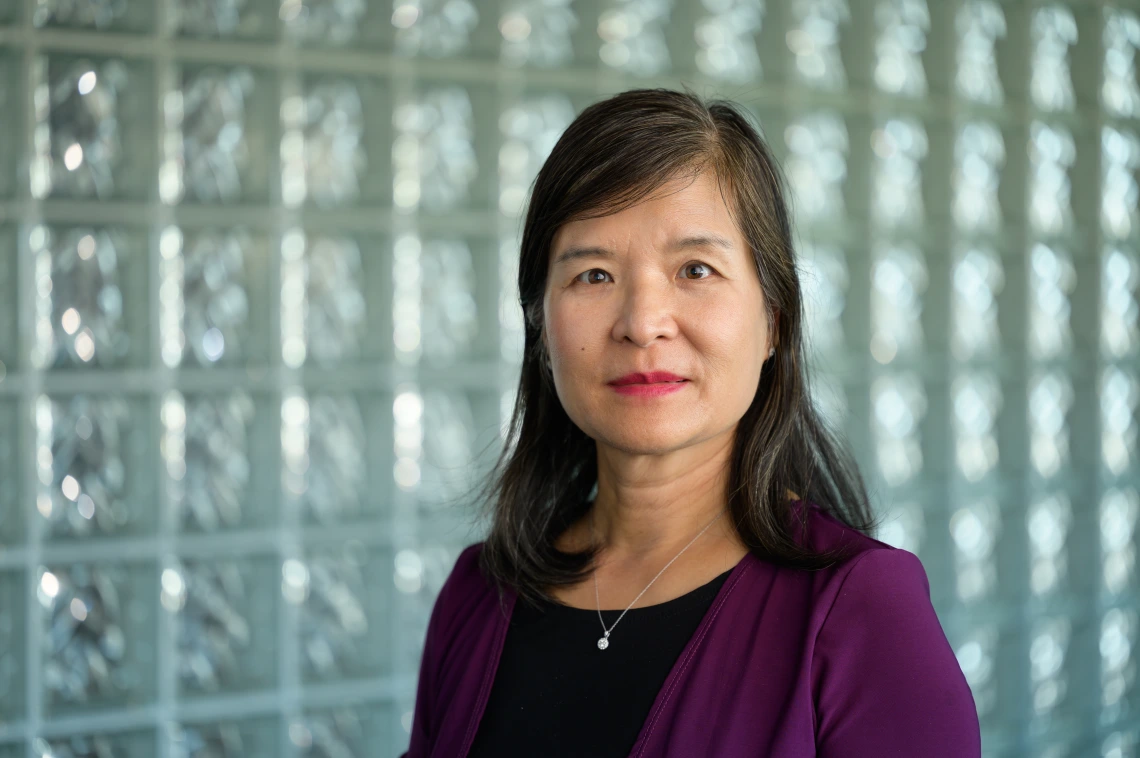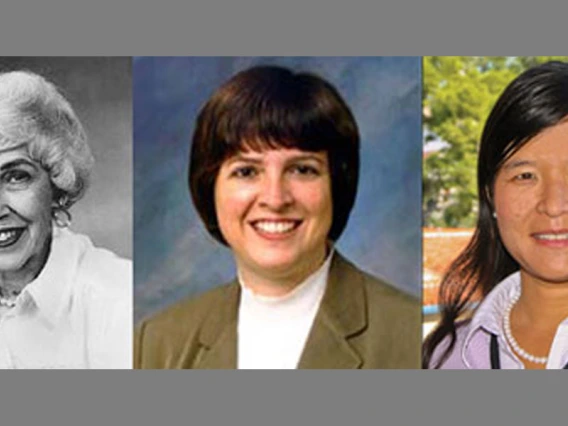Professor wins national civil engineering award named for her former colleague
CAEM’s Jennifer Duan carries on the legacy of pioneering professor Margaret Petersen.

Jennifer Duan’s research into sediment transport and hydraulic modeling leads to practical engineering techniques, such as those that ensure bridge foundations can hold up to extreme weather, says her nominator Kevin Lansey.
Since joining the University of Arizona in 2006, Jennifer Duan has made tremendous strides in the fields of sediment transport and hydraulic modeling and established herself as a mentor and guide for the next generation of researchers. Duan, a professor of civil and architectural engineering and mechanics, has received the Margaret Petersen Outstanding Woman of the Year Award for 2025.
“I feel very honored to get this award. I’m inspired by Margaret Petersen’s story and her important contributions to the history of the CAEM department,” said Duan, who worked alongside Petersen.
The Environmental and Water Resources Institute of the American Society of Civil Engineers established the award in 2011 to honor the accomplishments of Petersen, a former U of A civil engineering professor.
Petersen started her career with the U.S. Army Corps of Engineers in 1942, a time when female engineers were exceedingly rare. She joined the College of Engineering in 1981 after a 35-year tenure at the Corps of Engineers and spent the rest of her career researching, teaching and advising graduate students. She was a role model for women in engineering fields. She died in 2013 at the age of 92.
A leader in service and science
Duan, also a professor of biosystems engineering and hydrology and atmospheric sciences, has focused much of her career on hydraulics and sediments. Currently, her research is funded by several grants from the National Science Foundation, Department of Defense and U.S. Geological Survey.
Professor Kevin Lansey, Duan’s colleague in the CAEM department, nominated Duan for her achievements as a researcher, educator and mentor. Lansey noted Duan’s strong technical background as well as her service to the American Society of Civil Engineers, where she has led several committees.
“I believe that Jennifer exemplifies the traits, service and leadership that Margaret provided in the hydraulics field,” said Lansey.
One of Duan’s projects involves the use of imagery collected by remotely piloted vehicles, or drones, to characterize sediment flow in rivers. Airborne imagery can shed light on the rate of sediment flow and concentration of sediments in water.
“You see from images that different waterways have different colors, which means they have different sediment contents,” said Duan.
Understanding sediment flow is vital for managing reservoirs used to supply drinking water. Large amounts of sediments flowing in streams could lead to a buildup of sediments in reservoirs, reducing the amount of water they can hold. To more effectively manage sediment in rivers and reservoirs, researchers must first get accurate measurements.
Duan is also working on a multi-agency project focused on how the loss of vegetation cover after wildfires affects water and sediment flow. Improving understanding of how wildfires influence water resources is vital for determining how to use engineering methods to help ecosystems, Duan said.
Stepping up for the next generation
Over her career, Duan has also taught and advised many students, a role she sees as both important and gratifying. Duan believes mentoring students, as Petersen did, is crucial for ensuring the growth and success of engineering.
“We have to step up and make sure the field will grow,” said Duan.
Lansey called Duan a role model for women graduate students, citing her achievements and caring attitude.
Seeing the successes of her former students has been one of the more rewarding parts of Duan’s career. One former student rose to a high-level role in the U.S. Department of the Interior, and another is serving as a chief hydrologist.
“They’re going to be more successful than we can imagine.”
Duan joined the university from the University of Mississippi, from which she earned a doctoral degree. She earned a bachelor’s degree from the Wuhan Institute of Hydraulic and Hydropower Engineering and a master’s from Tsinghua University, both in China.


